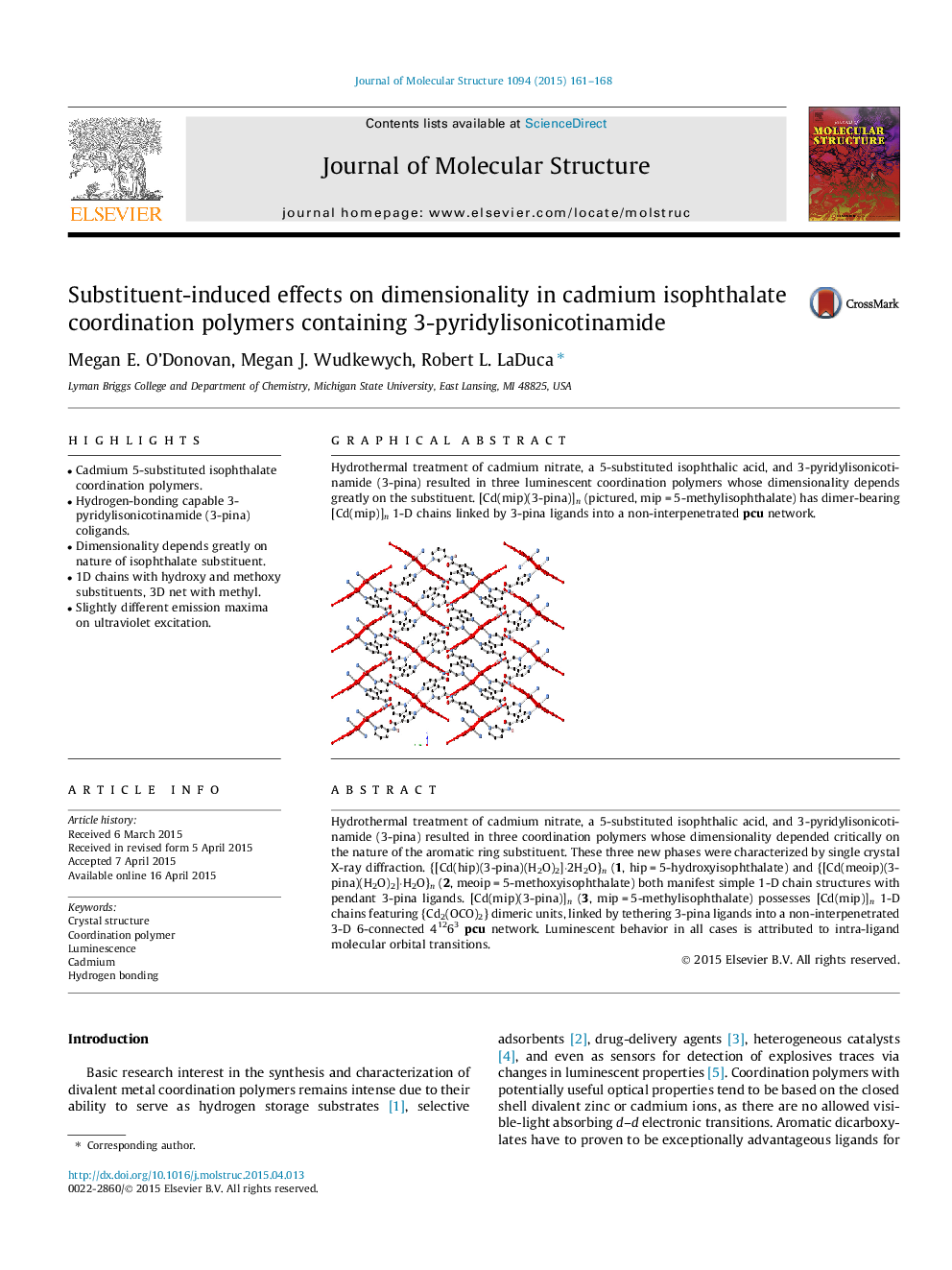| Article ID | Journal | Published Year | Pages | File Type |
|---|---|---|---|---|
| 1408136 | Journal of Molecular Structure | 2015 | 8 Pages |
•Cadmium 5-substituted isophthalate coordination polymers.•Hydrogen-bonding capable 3-pyridylisonicotinamide (3-pina) coligands.•Dimensionality depends greatly on nature of isophthalate substituent.•1D chains with hydroxy and methoxy substituents, 3D net with methyl.•Slightly different emission maxima on ultraviolet excitation.
Hydrothermal treatment of cadmium nitrate, a 5-substituted isophthalic acid, and 3-pyridylisonicotinamide (3-pina) resulted in three coordination polymers whose dimensionality depended critically on the nature of the aromatic ring substituent. These three new phases were characterized by single crystal X-ray diffraction. {[Cd(hip)(3-pina)(H2O)2]·2H2O}n (1, hip = 5-hydroxyisophthalate) and {[Cd(meoip)(3-pina)(H2O)2]·H2O}n (2, meoip = 5-methoxyisophthalate) both manifest simple 1-D chain structures with pendant 3-pina ligands. [Cd(mip)(3-pina)]n (3, mip = 5-methylisophthalate) possesses [Cd(mip)]n 1-D chains featuring {Cd2(OCO)2} dimeric units, linked by tethering 3-pina ligands into a non-interpenetrated 3-D 6-connected 41263pcu network. Luminescent behavior in all cases is attributed to intra-ligand molecular orbital transitions.
Graphical abstractHydrothermal treatment of cadmium nitrate, a 5-substituted isophthalic acid, and 3-pyridylisonicotinamide (3-pina) resulted in three luminescent coordination polymers whose dimensionality depends greatly on the substituent. [Cd(mip)(3-pina)]n (pictured, mip = 5-methylisophthalate) has dimer-bearing [Cd(mip)]n 1-D chains linked by 3-pina ligands into a non-interpenetrated pcu network.Figure optionsDownload full-size imageDownload as PowerPoint slide
